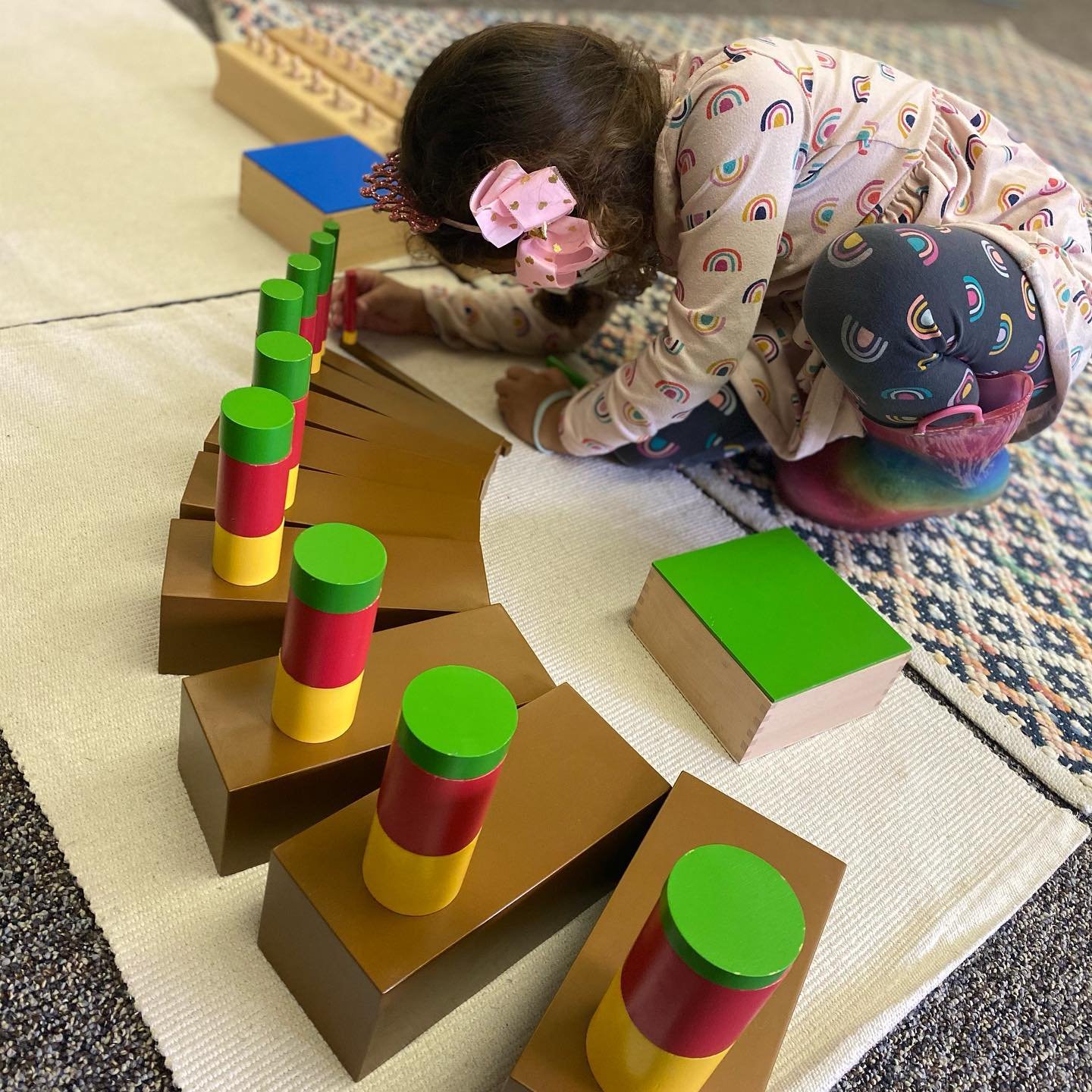The Montessori Method
"We cannot create observers by saying 'observe', but by giving them the power and the means for this observation and these means are procured through education of the senses." - Maria Montessori
The Power of Observation
The Montessori Method was developed by Maria Montessori in 1907. Maria Montessori believed that the first duty of the educator was to recognize the human personality of the individual, and to observe and respect it. This is a core value of ours at Bridge Montessori as we value each child as unique and aim to provide tailored learning environments in each classroom.
Montessori education is a scientific method of teaching used to educate children through direct control of their environment. It uses materials to stimulate a child's senses, which makes the learning experience more meaningful.
Montessori curriculum includes materials in Practical Life to enhance motor skills through daily functions; Sensorial to allow a child to explore his senses, and gain pre-math skills; Cultural, which includes learning about plants, animals, geography, and other cultures; Math, which helps a child understand mathematical functions in concrete form; and Language which teaches vocabulary, writing, and reading.
Montessori Classrooms:
Child centered learning
Children centered learning allows for each individual child freely choosing their own activities from a carefully selected range of materials and options during long, uninterrupted work periods. Teachers observe and guide children based on their specific needs and abilities, allowing them to explore and learn at their own pace and on their own terms. Everything in the classroom is within reach and sized for the child.
Mixed Age Groups
One unique aspect of the Montessori education method is that it supports and encourages multi-age grouping. Older children work with younger children, providing an opportunity for older children to develop leadership skills, and encourages younger children to accomplish more challenging activities. Multi-age grouping also promotes respect between older and younger children, and reinforces knowledge of the Montessori materials.Classroom stations
Environment of Order
Each material belongs in a specific place, and when children are finished with an activity, they place the items back into their appropriate places. This sense of order teaches self-discipline, and helps create a sense of order for a child. When children are able to play in a neat area, they are free to be creative and focus on the learning process

